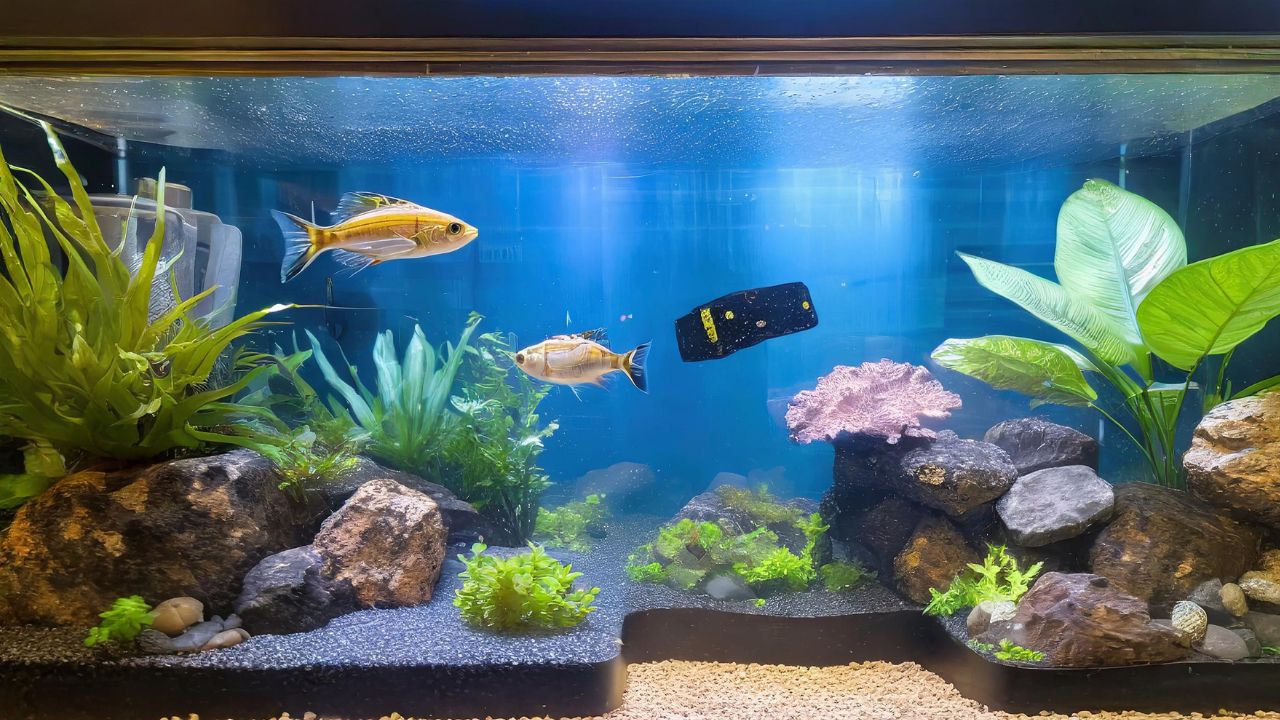Angelfish are stunning freshwater fish that can add elegance and beauty to any aquarium. These graceful creatures are known for their triangular shape, long fins, and vibrant color patterns. However, when it comes to keeping angelfish, many aquarium owners often wonder how many angelfish should you keep together and what the ideal tank conditions are for these fish. In this comprehensive guide, we will explore the factors to consider when determining the number of angelfish to keep together, the tank requirements for these fish, suitable tank mates, and more.
Introduction
Angelfish, scientifically known as Pterophyllum, are native to South America, particularly the Amazon River Basin. In the wild, these fish live in loose groups, often interspersed with other fish species. While angelfish are not technically schooling fish, they exhibit shoaling behavior and thrive in the company of their own kind. Keeping angelfish together in an aquarium provides them with a sense of security, reduces stress, and allows them to display their natural behaviors.
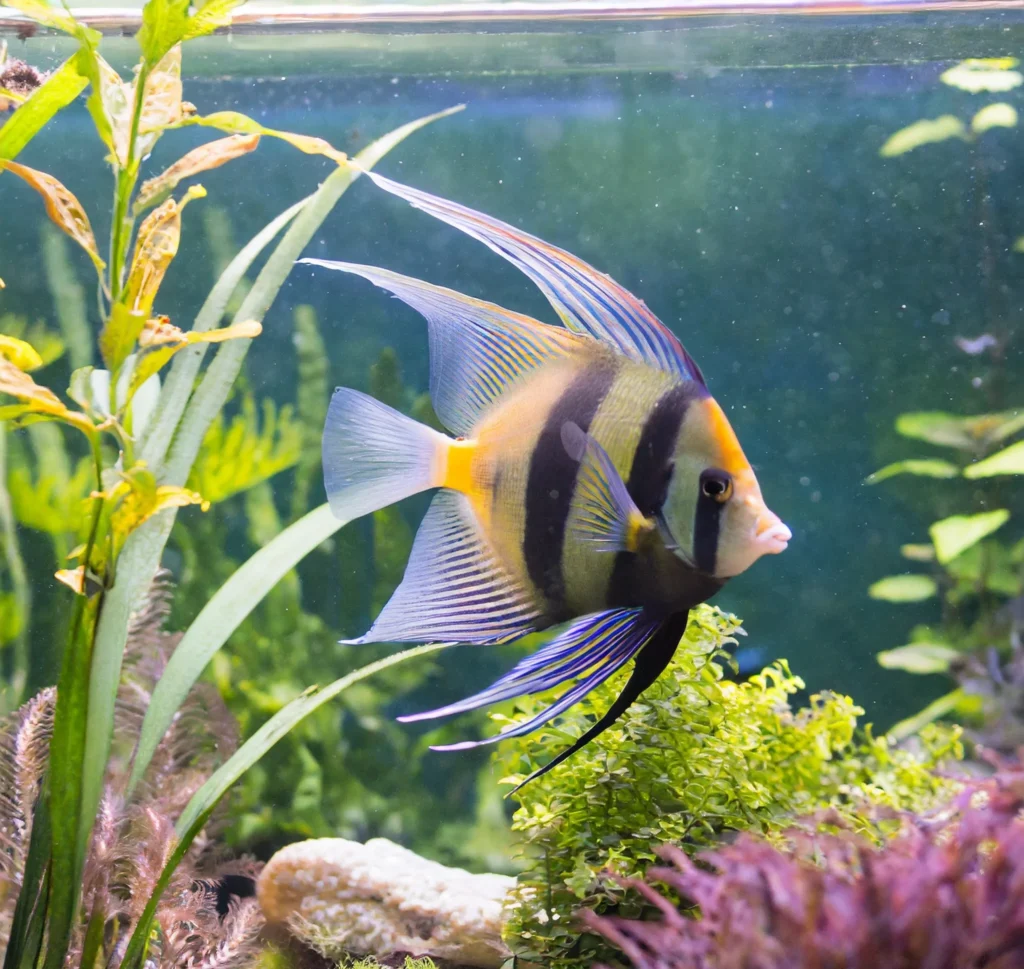
Why Should You Keep Angelfish Together in an Aquarium?
Keep angelfish together in an aquarium is essential for their overall well-being. While angelfish are not schooling fish in the traditional sense, they are social creatures that benefit from the presence of their own species. When kept alone, angelfish may become stressed, lethargic, and prone to illness. By keeping them together, you provide them with companionship and the opportunity to engage in natural behaviors such as breeding, establishing hierarchies, and displaying courtship rituals.
How Many Angelfish Should You Keep Together?
The ideal number of angelfish to keep together depends on several factors, including tank size, compatibility, and your ability to provide proper care. As a general guideline, it is recommended to keep at least two angelfish together in the same aquarium. This allows them to form a pair and engage in natural behaviors.
For a beginner aquarist, maintaining a pair of angelfish is usually the best option. Caring for angelfish requires attention to water parameters, feeding, and overall tank maintenance. By keeping a pair, you can focus on providing optimal care and ensure the well-being of your fish.
If you have a larger tank and more experience in fishkeeping, you can consider keeping more than two angelfish together. However, it is important to closely monitor the interactions between the fish and provide ample space to avoid aggression and territorial disputes. Additionally, it is recommended to introduce additional angelfish in even numbers to prevent one fish from being bullied by a pair.
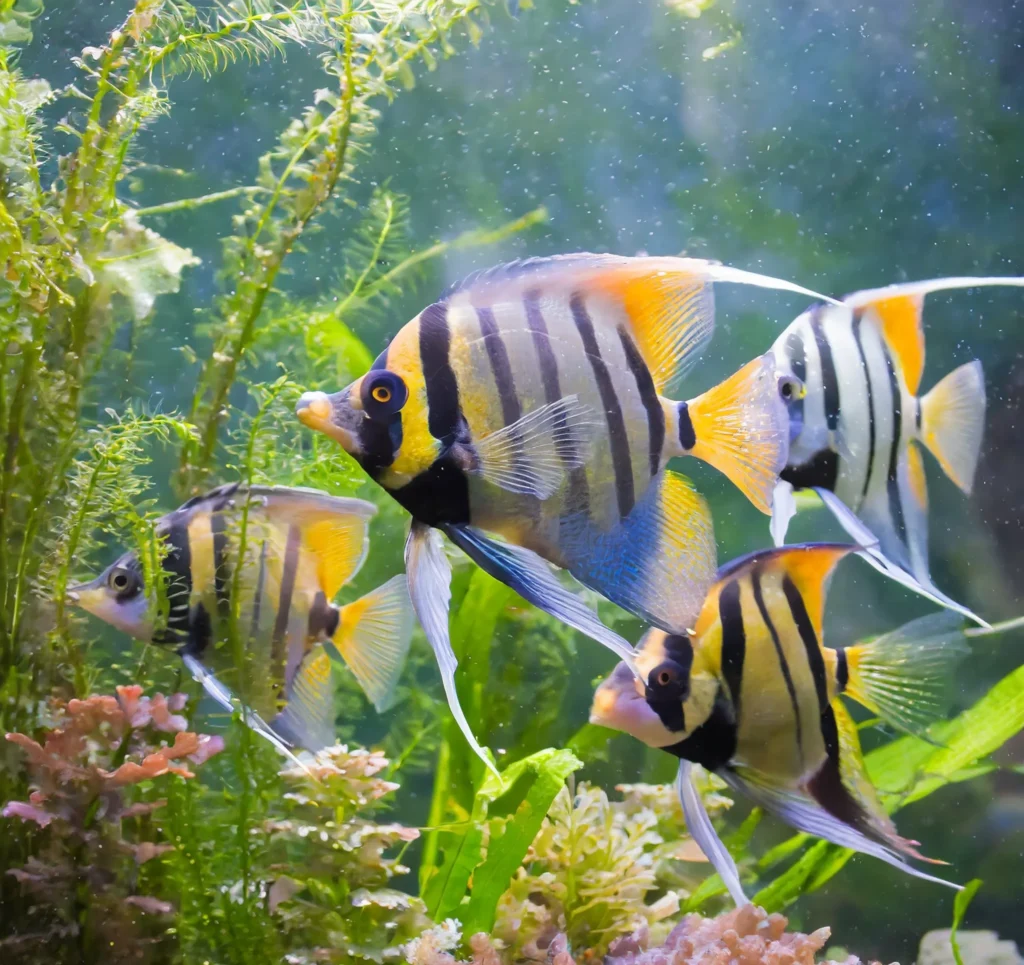
Tank Size and Requirements for Angelfish
Proper tank size and conditions are crucial for the health and well-being of angelfish. These fish have a tall and streamlined body shape, which means they require a tank with enough vertical swimming space. As a general rule, allocate a minimum of 20 gallons of tank space for a pair of angelfish. However, larger tanks are always preferable as they provide more room for the fish to swim and establish territories.
When choosing a tank for angelfish, consider the height and dimensions. A taller tank with a minimum height of 18 inches is ideal to accommodate their vertical swimming habits. This will allow them to display their natural behaviors and prevent them from feeling cramped.
In addition to tank size, water parameters play a crucial role in maintaining a healthy environment for angelfish. They prefer water temperatures between 75°F and 82°F, with a pH level between 6.8 and 7.8. Regular monitoring of water conditions, including temperature, pH, and water hardness, is essential to ensure the well-being of your angelfish.
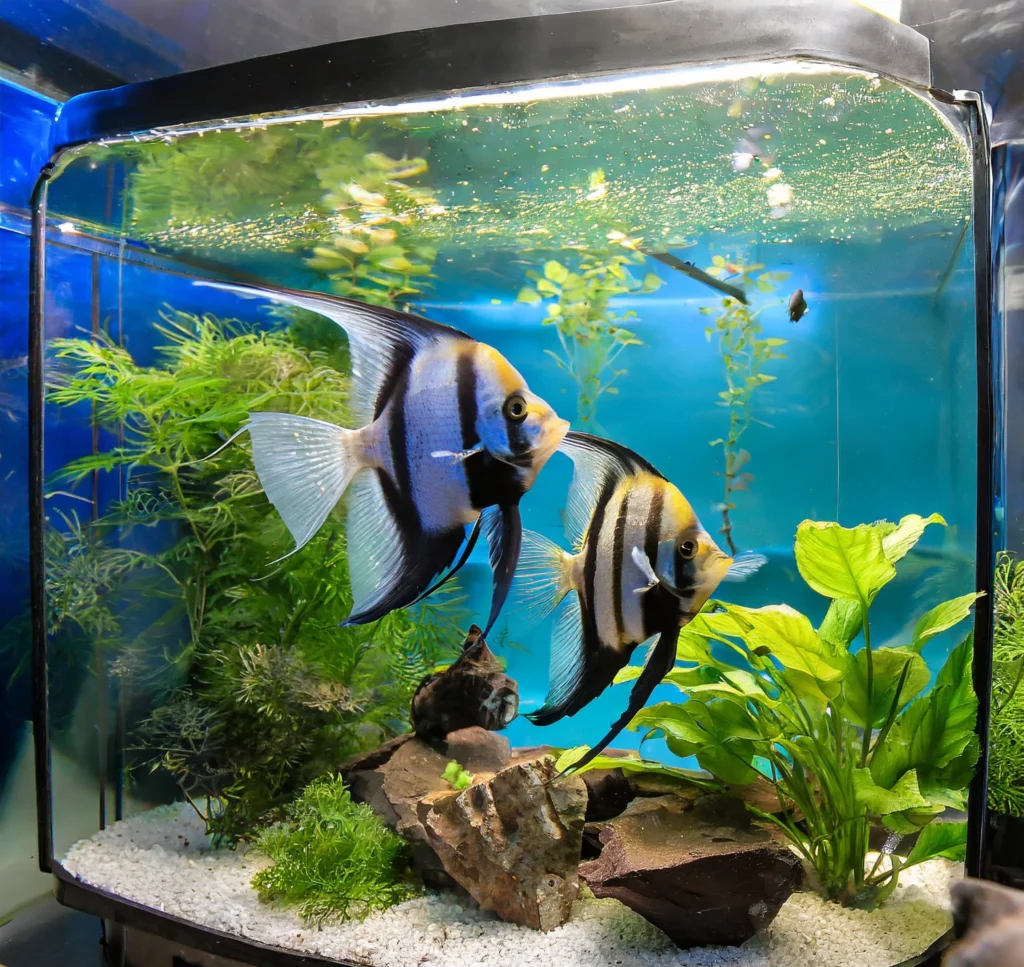
Setting Up Your Aquarium for Angelfish
To provide a suitable habitat for your angelfish, setting up your aquarium properly is essential. Here are some key considerations:
Ideal Tank Size:
- A minimum of 20 to 30 gallons for a pair of angelfish, with additional tank space for each additional fish.
- Taller tanks with a height of at least 18 inches to accommodate their vertical swimming habits.
Gravels:
- Use a soft and fine Gravels, such as sand or small pebbles, to prevent injury to your angelfish.
Water:
- Maintain water temperatures between 75°F and 82°F, with a pH level between 6.8 and 7.8.
- Regularly test water parameters and perform water changes as needed to maintain optimal conditions.
Filtration:
- Use a low-flow canister filter or under-gravel filter to maintain water quality without creating excessive water movement that may stress the angelfish.
Plants:
- Provide ample hiding spaces and mimic their natural habitat by adding live or artificial plants.
- Suitable plant options include anacharis, Amazon sword plant, and Java moss.
Lighting:
- Provide dimly lit areas with overhanging plants to create a comfortable environment for your angelfish.
- Use lighting that mimics natural sunlight and provide 8 to 12 hours of illumination per day.
By following these guidelines, you can create a suitable and comfortable habitat for your angelfish.
Suitable Tank Mates for Angelfish
When selecting tank mates for angelfish, it is important to choose peaceful species that can coexist harmoniously. Avoid aggressive fish or those that may nip at the angelfish’s long fins. Some suitable tank mates for angelfish include:
- Dwarf gouramis: These colorful and peaceful fish make great companions for angelfish.
- Tetras: Small tetra species, such as neon tetras or cardinal tetras, can coexist peacefully with angelfish.
- Corydoras catfish: These bottom-dwelling fish are peaceful and can help keep the tank clean.
- Plecos: Plecos are known as “janitor fish” for their algae-eating habits and can be compatible tank mates for angelfish.
When introducing new tank mates, carefully observe their interactions and ensure they are compatible. Avoid keeping angelfish with aggressive or fin-nipping fish species, as this can lead to stress and injury.
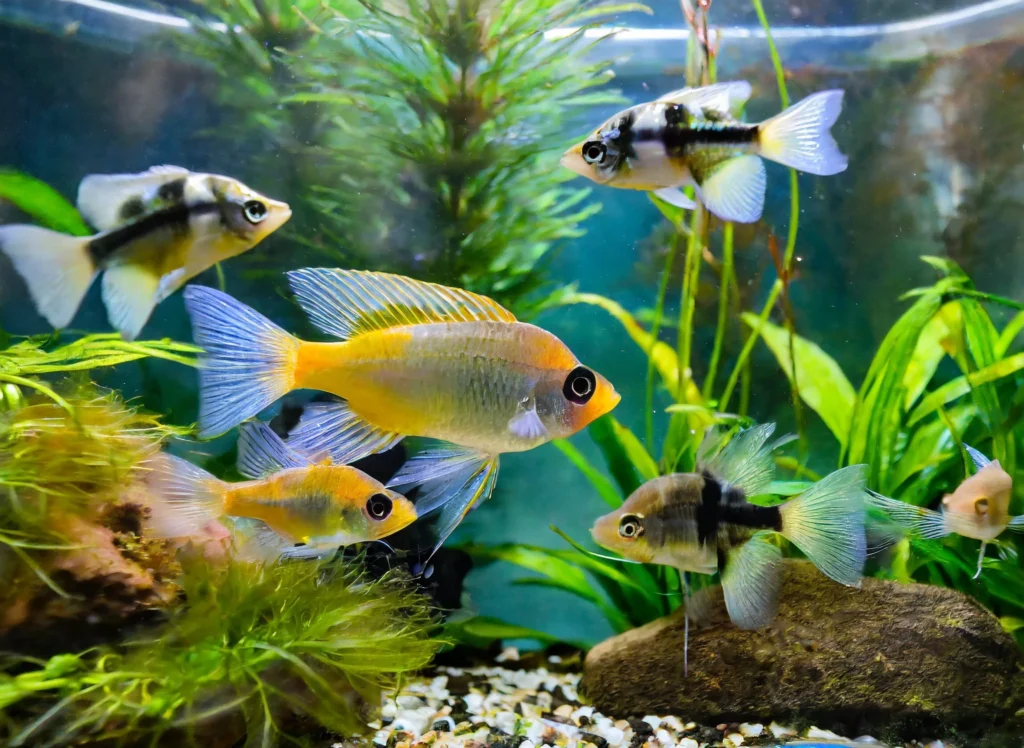
Avoiding Overcrowding in Your Aquarium
Overcrowding in an aquarium can lead to aggressive behavior, territorial disputes, and poor water quality. It is important to avoid keeping too many angelfish in a tank to prevent these issues. Providing adequate swimming space and reducing competition for resources is crucial for the well-being of your fish.
As a general guideline, allocate at least 20 gallons of tank space for a pair of angelfish. For each additional angelfish, add an additional 10 gallons of tank space. This will ensure that your angelfish have enough room to swim and establish their territories without feeling crowded.
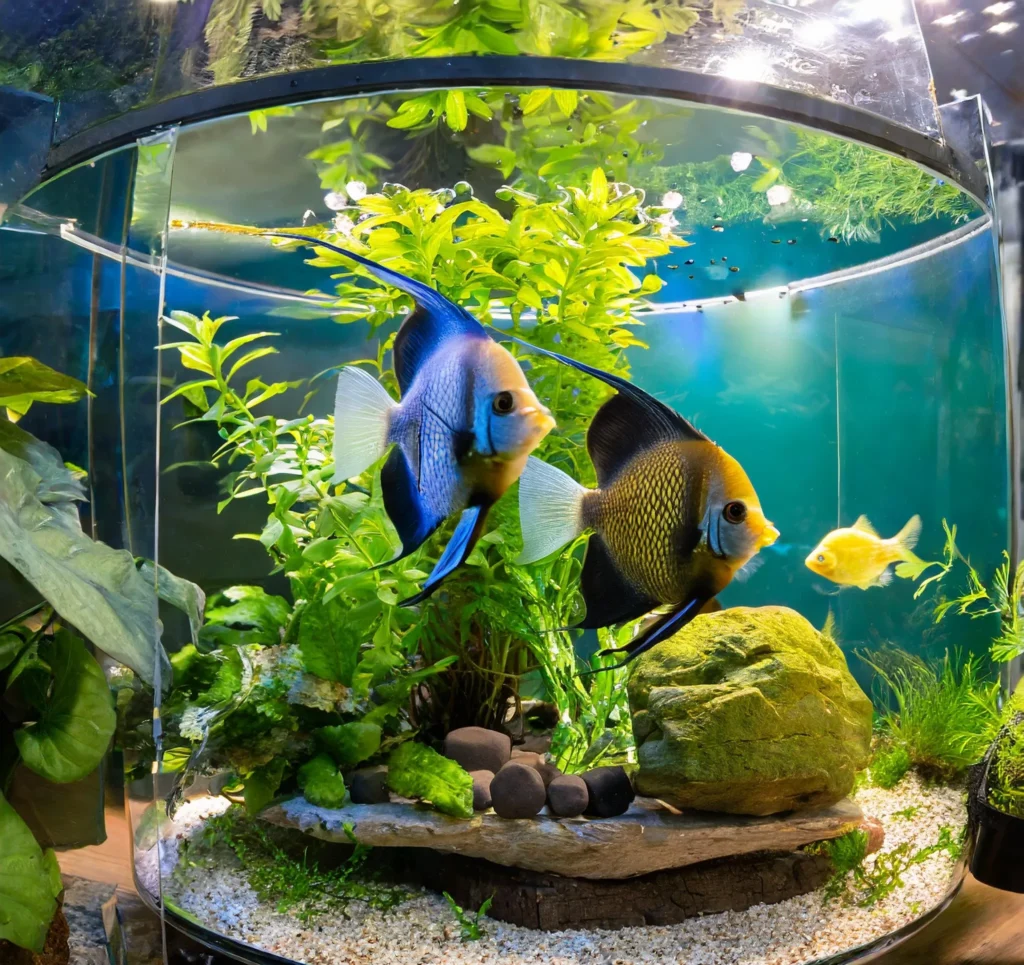
Frequently Asked Questions
Can you keep different types of angelfish together?
Yes, different types of angelfish can be kept together in the same tank. However, it is important to closely monitor their interactions to ensure compatibility and prevent aggression. Some angelfish species can even crossbreed, leading to unique offspring.
Can angelfish be kept alone?
While angelfish can be kept alone, it is not ideal for their well-being. Angelfish are social fish that thrive in the company of their own species. Keeping them alone can lead to stress, lethargy, and decreased lifespan.
How many angelfish can be kept in a 55-gallon tank?
In a 55-gallon tank, it is recommended to keep up to four angelfish. This allows each fish to have adequate swimming space and reduces the likelihood of aggression and territorial disputes.
Can I keep three angelfish together?
Keeping three angelfish together is possible, but it may lead to increased aggression and stress. It is recommended to keep angelfish in pairs to ensure a harmonious environment.
Is less than 20-Gallon Tank Suitable for Two Angelfish?
No, less than 20-Gallon Tank not Suitable for Two Angelfish. A single angelfish needs at least 10 gallons to survive and at least 20 gallons to thrive. In addition, a small fish tank can cause suffocation your fish. In addition, small tanks make your angelfish uncomfortable, anxious, and more aggressive than usual.
How Do Angelfish Behave Toward Each Other?
Angelfish behave differently toward each other depending on numbers and temperament. Angelfish are territorial. Therefore in groups, they form hierarchies. They also fight to prevent invasion from similar fish species. These fish hardly interact with each other except when mating or competing for food.
How To Reduce Aggression in Your Angelfish Tank?
Aggression in angelfish is more common during breeding and feeding. Keep the breeding fish separately in a different tank.
Can I mix angelfish with other fish?
Yes, angelfish can be mixed with other peaceful fish species that share similar water parameters. However, avoid keeping them with aggressive or fin-nipping fish that may harm the angelfish.
Final Words
Keeping angelfish together in an aquarium provides them with companionship, reduces stress, and allows them to display their natural behaviors. The ideal number of angelfish to keep together depends on factors such as tank size, compatibility, and your ability to provide proper care. By following the guidelines outlined in this guide, you can create a suitable and harmonious environment for your angelfish. Remember to closely monitor their interactions, provide adequate swimming space, and choose compatible tank mates. With proper care and attention, your angelfish will thrive in their new home.

